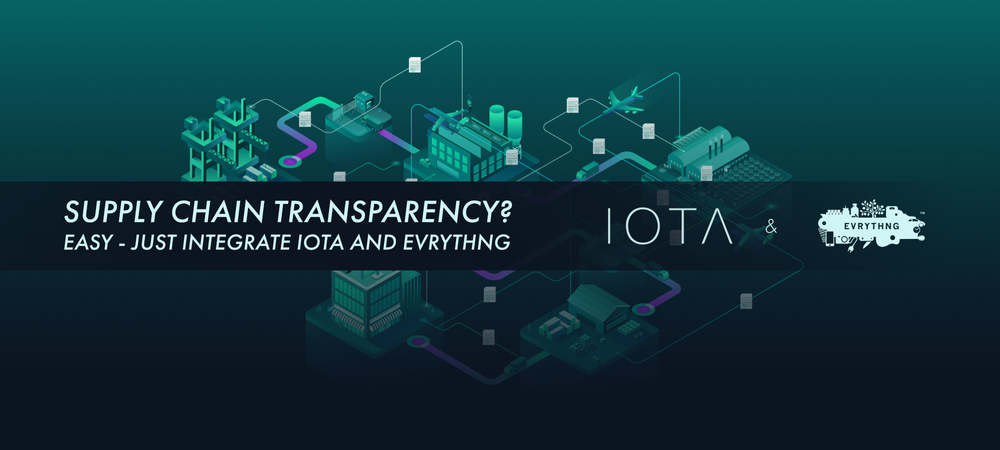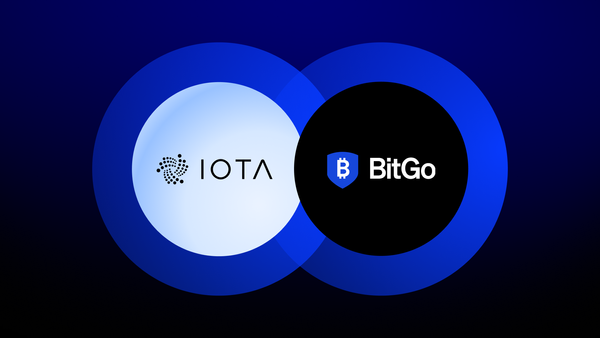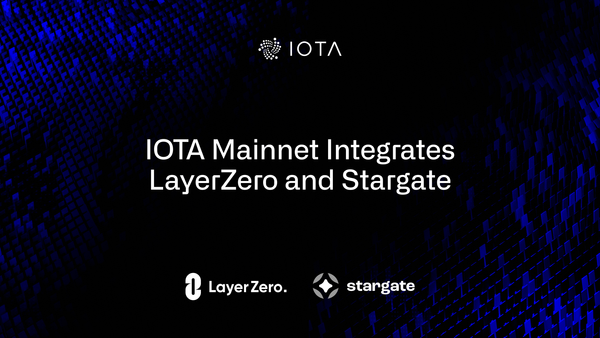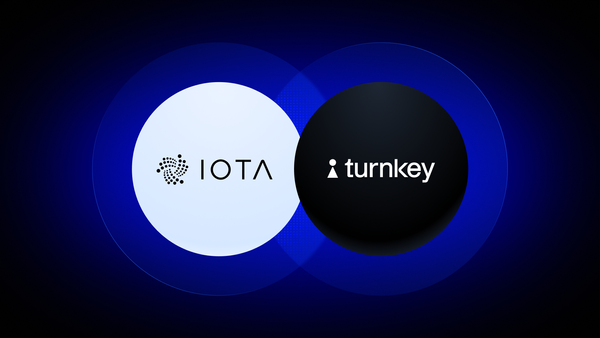IOTA and EVRYTHNG Collaboration: This is How You Make a Transparent Supply Chain
The collaboration between IOTA and EVRYTHNG announced today is designed specifically for making product supply chains transparent in order to meet surging demands for sustainability from people and planet alike.
Supply chains are complex systems that currently lack transparency. Increasing transparency among supply chain stakeholders is already a daunting task; Exposing this transparency to consumers is even more difficult.
But what if consumers could demand transparency? Today’s consumers want to make informed choices about the products they purchase. Particularly in the food and fashion industry, provenance data can help consumers assess the authenticity and sustainability of the products they purchase.
Securing transparency with DLTs
Public distributed ledgers can help manufacturers open up supply chain data to their customers. Storing this data on distributed ledgers allows any customer to access it either from a dedicated app or with a simple web interface, without the need for any log-in detail or sharing of personal data.
EVRYTHNG’s mission is to give unique digital identities to a range of consumer goods. Using this identity, an object (like a handbag or a bottle of whiskey) can be followed along its production chain, while collecting data about its manufacturing process.
For luxury items, such data becomes important to prove their authenticity and can combat the half-trillion-dollar counterfeit industry. In the case of organic food, the same data is useful to prove compliance with high production standards.
The information contained in this data often fails to reach consumers in a trusted and transparent way. Instead, it remains siloed by manufacturers who face the challenge to prove the integrity and authenticity of this data to consumers.
When information is provided to customers via a centralized platform, it has often been aggregated by numerous actors in the supply chain and filtered through a middle man.
This increases the risks of tampering or false information, and the authenticity of consumer goods cannot be proven if there is no trust in the authenticity of the data used to prove it.
A first step is offered by new mobile technologies. Combined with a QR code or other scanning and tagging technologies, unique digital identities can be used to link physical goods to their digital representation and provide their related data to consumers.
But this data is still not enough to prove the authenticity of the attached goods.
Distributed data integrity for digital doubles
IOTA is committed to providing data integrity by allowing data to be stored on a distributed ledger that is easy to access and available to everybody. IOTA’s distributed ledger, the Tangle, is ideal for these micro-transactions given its feeless and permissionless nature.
For a goods manufacturer, the feeless micro-transactions structure allows any of its business partners to send IOTA transactions without dealing with the complexity of setting up wallets and buying cryptocurrency.
For customers, accessing the IOTA ledger and the information shared on it does not require ownership of cryptocurrency or installing a wallet. All involved actors can send small amounts of data to the IOTA ledger without the need to identify complex business models to cover the costs of managing this trust infrastructure.
Furthermore, IOTA’s permissionless nature allows users to access an always available and general-purpose infrastructure provided as a service to deploy new applications.
This removes the need to first solve and define complicated governance rules and stakeholder agreements before any infrastructure can be deployed.
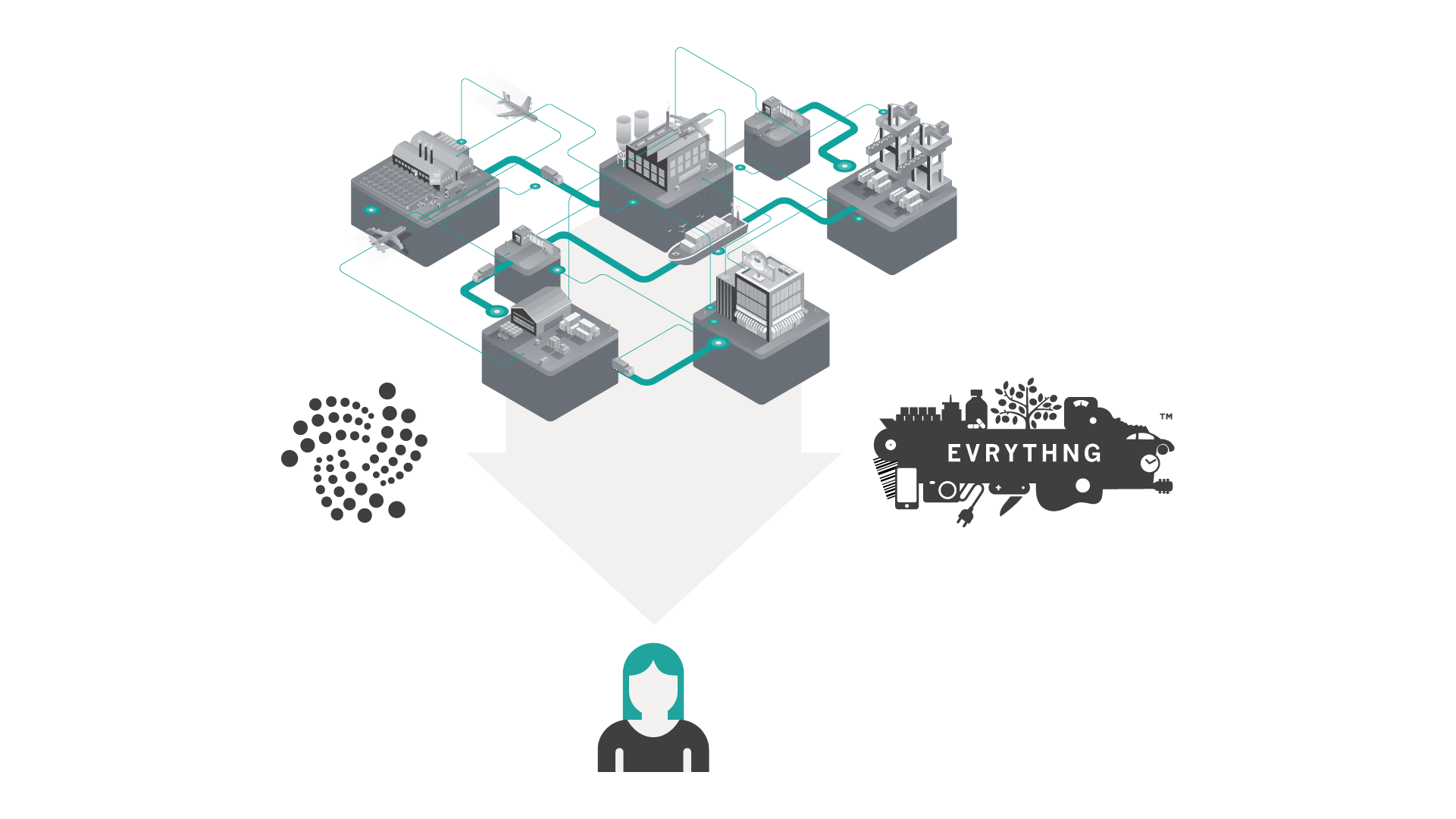
With EVRYTHNG and IOTA technologies coming together, product data can be opened up to consumers with embedded authenticity and integrity.
With this in mind, we organized a small half-day IOTA/EVRYTHNG hackathon in January.
The target was simple: increase trust in the product data collected by the EVRYTHNG platform and transfer that trust to the consumers.
The idea works like this:
As soon as data is collected and attached to a product's digital identity, it is stored on the EVRYTHNG platform; At the same time, a hash (e.g. SHA256) of it is stored into the IOTA Tangle. This hash becomes timestamped and immutable.
Once a digitized product ends up in the hands of the consumer, its digital identity can be instantly scanned with a smartphone and all relevant data will appear on the screen.
To be sure that this data is real and not an altered version, an app on the consumer’s mobile phone can automatically match the received data hash against the already computed one from the IOTA Tangle. If the two are a match, the data is genuine.
For the sake of simplicity, this is done by a dedicated consumer app. However, due to the open nature of IOTA, consumers can also do the same with any tool of their choice, manually exploring the IOTA Tangle through existing and independent web tools (e.g.https://thetangle.org/).
As a result, manufacturers can not repudiate data attached to their products, and even EVRYTHNG can not change it. This way, trust in product data is brought to consumers to empower them with the ability to identify fake data.
How did we do this? In order to support the needs of its customers and goods manufacturers, EVRYTHNG already developed the Blockchain Integration Hub. The Hub integrates with the EVRYTHNG main solution, known as the Reactor Rules Engine.
This engine allows users (e.g. manufacturers) of the EVRYTHNG platform to develop scripts that trigger actions associated with products’ digital identities when specific conditions are met.
Thanks to the integration with the Hub, one of the new supported actions could be sharing the hash of the data associated with a given digital object onto a target blockchain. In fact, the Hub already integrates different blockchains for this purpose.
But how and why has IOTA been integrated?
It’s simple.
For each digital identity managed by the EVRYTHNG engine, a digital twin is created. The digital twin is a digital representation of a product that solely contains the information needed to be stored on a blockchain or distributed ledger.
In this case the product’s digital identity and the hash of its associated data. In the case of IOTA, a dedicated MAM Channel is created for each digital twin. (Editor's note: As of 2020, MAM is now IOTA Streams)
Messages in the given MAM channel carry new versions of the information associated with that digital product. More details can be found here: https://developers.evrythng.com/docs/iota
“What makes a significant step forward here is the simplicity of integration and the natural fit that MAM channels provide to the concept of capturing, sharing and validating supply chain events,”said Dominique Guinard, Chief Technology Officer of EVRYTHNG.
“The different events in the life-cycle of a product that need to be sent to a DLT can easily be linked in the same MAM channel, without any extra work,” Dominique concluded.
Without a second layer protocol like IOTA’s MAM, sharing multiple information requires the creation of multiple transactions. And maintaining a link between these transactions requires extra off-line overhead resources.
This is the typical architecture on other blockchains, but with MAM such functionality is prepared and ready to be directly deployed.
In supply chains where each product is digitized, the amount of overhead might be overwhelming and impossible to manage.
The figure below shows the implemented architecture:
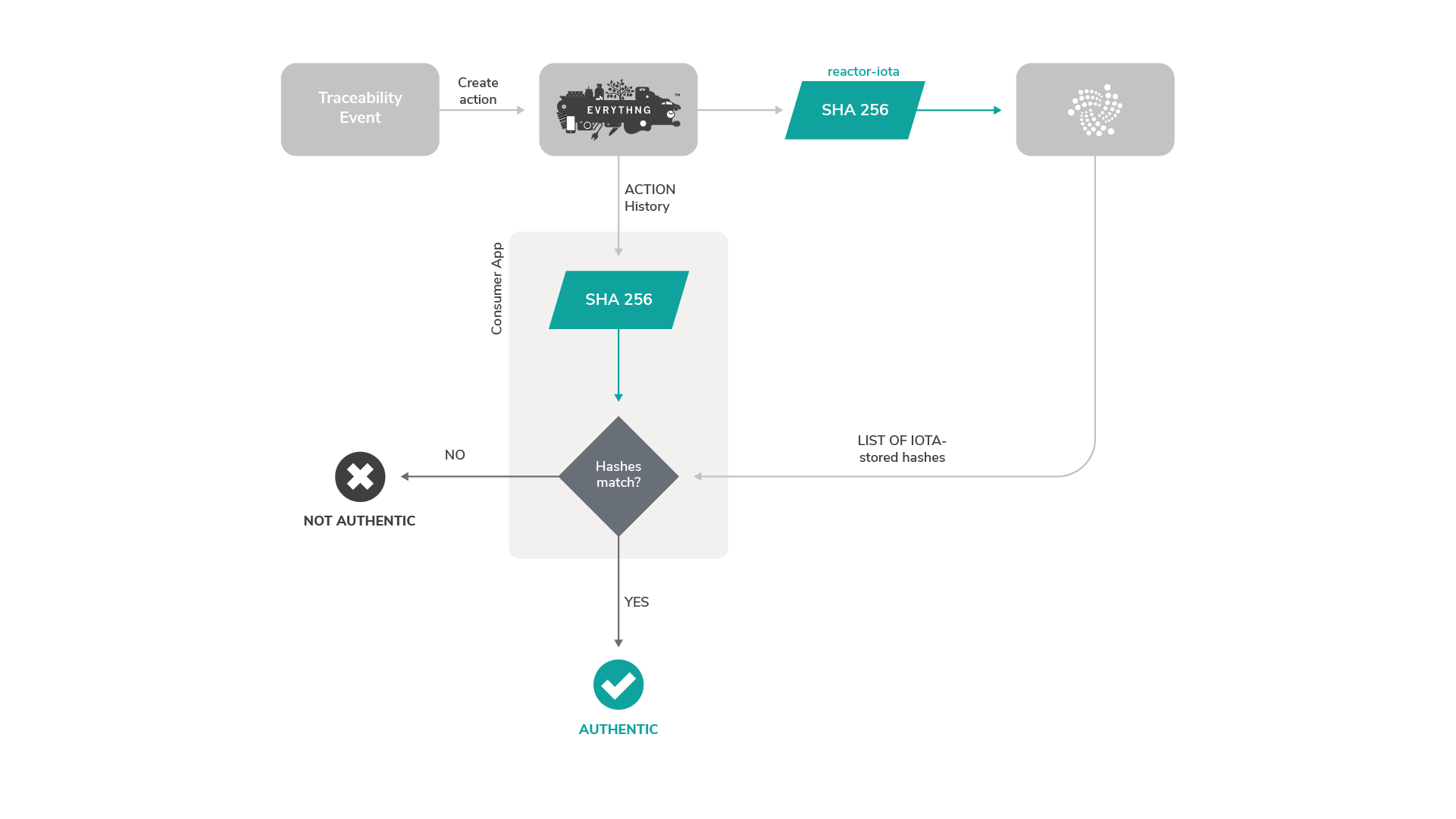
However, the availability of the MAM protocol is not the only IOTA feature that perfectly matches the EVRYTHNG use cases and requirements. IOTA’s permissionless nature allows supply chains actors and EVRYTHNG to secure the integrity of the shared data with a computational power that is higher than any other permissioned network.
The same permissionless nature of the IOTA ledger makes it possible to open consumer access to such data immediately, without the need of first establishing trust with any organization recipient of this information.
In addition, the feeless IOTA transaction structure allows the solution to scale independently from the number and type of supply chain managed identity and events.
The lightweight IOTA protocol, which doesn’t require expensive Proof of Work (PoW), meets the requirements of supply chains to design energy-efficient and greener solutions.
Following the success of this implementation, a number of real use cases are currently being tested by EVRYTHING with its customers (e.g., product manufacturers) and consumers.
IOTA and EVRYTHNG are also exploring further development efforts required to integrate MAM with supply chain standards, with the aim of establishing IOTA as a reference architecture for supply chain transparency and traceability.
For more information about the use of IOTA technology in supply chains, and to discuss more ideas on how to integrate IOTA, please visit iota.org/supplychain.

